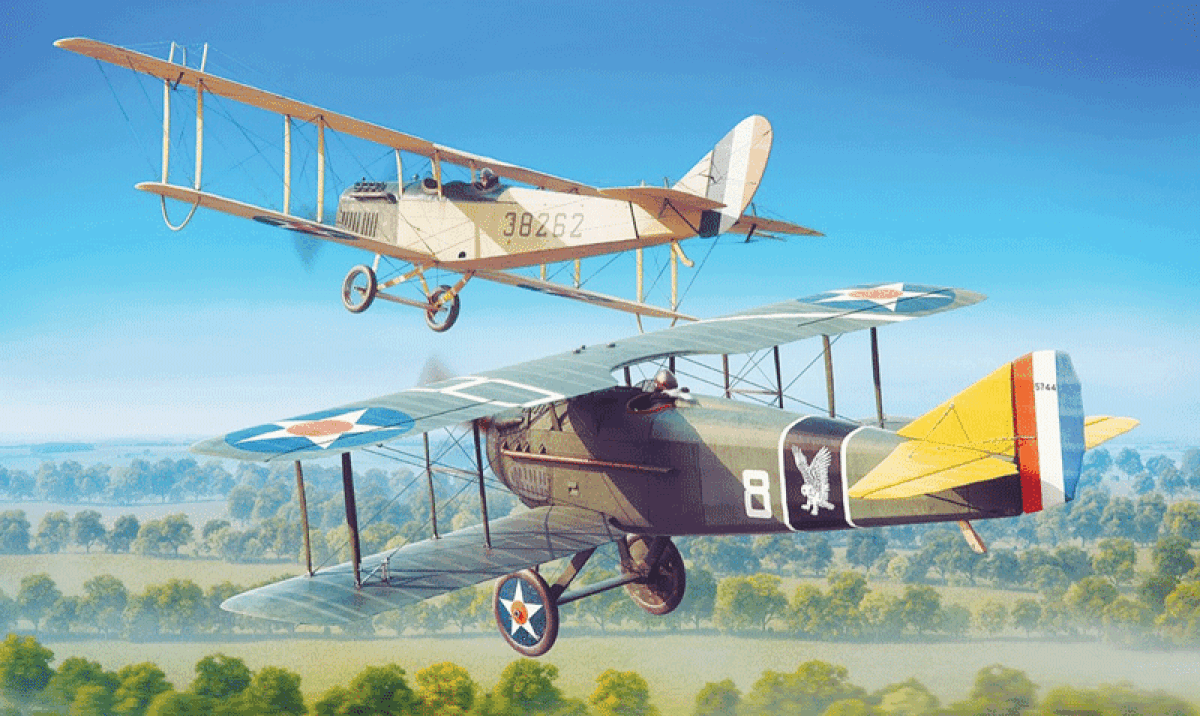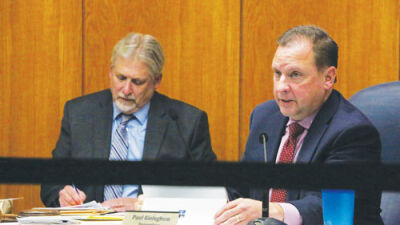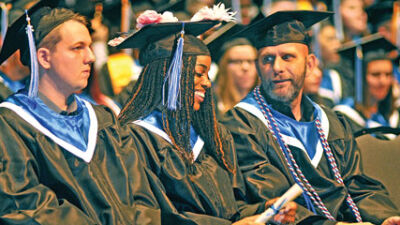HARRISON TOWNSHIP — One of America’s first military planes returned to Selfridge as the on-base Selfridge Military Air Museum took delivery of a rare Curtiss JN-4 Jenny biplane on Aug. 11.
“The Jenny was very instrumental in all aspects of early aviation in the United States,” said Ed Kaminski, deputy director of the Selfridge museum.
One of the earliest mass-produced aircraft, the Curtiss JN was primarily used as a military trainer aircraft during World War I. Pilots from the United States and Canada got their first flight experiences behind the stick of a JN before receiving more advanced fighter or bomber training on British and French planes in Europe, while the first military aircraft mechanics learned how to fix Sopwith Camels and SPADs by wrenching on JN planes in the United States.
Selfridge was established in 1917 and a Curtiss JN airplane delivered by truck was the first flight from the base in July that year.
“The Jenny stayed around at Selfridge as a liaison aircraft who flied to different bases,” Kaminski said. “It was a do-all aircraft.”
Curtiss produced around 4,000 JN aircraft, many of which went on to influence aviation after the war. Planes were sold on the surplus market for about $400 (about $6,110 today) and many were bought by barnstormer pilots, flown around on the exhibition circuit before infamously meeting their end being crashed into barns. Curtiss JN planes found a more productive civilian use after the war, serving as the first airmail couriers. According to Kaminski, only seven Curtiss JN planes have survived to see a second century.
The latest Curtiss JN-4 to swing by Selfridge was found by Kentucky-based aviator and documentarian Dorian Walker in 2011. Originally owned by an Ohio engineer trying to make it airworthy by Federal Aviation Administration standards, Walker and an aircraft mechanic bought the plane from him after a failed FAA inspection.
Planning to get the plane back in flying order, Walker and the mechanic built the plane up from scratch using old-growth Sitka spruce wood for the frame and fabric for the biplane’s wings. Once finished, Walker flew the plane and leased it for $1 a year to the Friends of Jenny nonprofit. Walker and the Friends flew the Curtiss JN in military colors from airshow to airshow wearing the tail number 38262. The same numbers appear on a Curtiss JN shown upside down on a famously misprinted airmail stamp.
“It’s a grand old dame to fly, but you’re constantly flying it,” Walker said. “There’s no dynamic stability. You’ve constantly got your hand on the stick, and of course it vibrates. The seats are wooden. It’s 100% authentic.”
Unfortunately, the rare flying JN-4 met its end on May 15, 2023. While flying back from an airshow near St. Louis, the plane suffered an engine failure in the highlands surrounding its home base of Bowling Green, Kentucky. Unable to find a suitable place to land, Walker and copilot Craig O’Mara had to put the Curtiss down in an abandoned strip mine.
“When it settled on its final settling down, suddenly the gear caught what must’ve been mud because it just ripped the gear off and the plane went off on its belly and then slid to a stop,” Walker said.
While the aircrew was unharmed, the JN-4 was split in two. Walker’s time flying the plane was over, but a great relationship formed at the 2022 Selfridge Air Show turned into a $65,000 opportunity for the on-base museum. After a period of fundraising, FreeStar Financial Credit Union bought the plane on the museum’s behalf and donated it to their collection.
Arriving by truck bed much like the first JN to fly from Selfridge, Kaminski says the museum plans to restore the plane to be back on static display by April 2024, with repairs to the wings and fuselage. It’s not impossible to fly the plane again, but neither Walker nor the museum are interested in doing so.
“The plane can be airworthy, but we’ve made a promise that it will not fly,” Kaminski said. “It’s too valuable.”
Once fixed, the Curtiss JN-4 will join the museum’s French-made SPAD S.XIII biplane. Together, the planes represent the early years of military aviation as the first trainer and fighters assigned to Selfridge.
“If you’ve been out there you know they’ve got a great collection of aircraft that go from D-Z,” Walker said. “Now they’re going to go from A-Z. … It’s such a rare and beautiful airplane. It’s so large with all the cabling and structure of the airplane. It’s going to be such an amazing asset for you all in that part of the world.”
Located on the Selfridge base, identification and a background check are required to access the Selfridge Military Air Museum. Pre-registration and valid identification information can be found at selfridgeairmuseum.org/base-access-pre-registration.
The museum is open on Saturdays and Sundays from 11 a.m. to 5 p.m. Adults get in for $10, seniors and military for $8, and children 4-17 for $5. Children younger than 3 and active duty military members in uniform enter for free. The museum’s season ends Oct. 29. Call (586) 239-5035 for more information.
 Publication select ▼
Publication select ▼





















